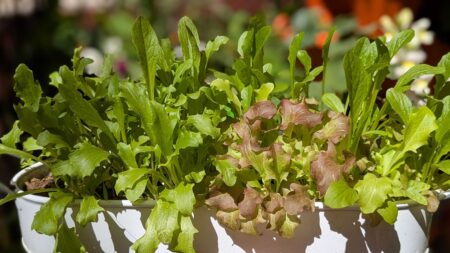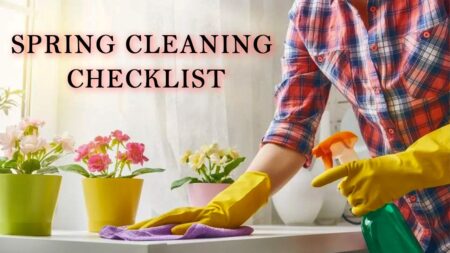If you’re a homeowner relying on a humidifier for fresh, comfortable indoor air, you already know the difference a good mist can make, especially during dry winter months. But while we often set these handy devices up and forget about them, a humidifier can quickly turn from a helpful appliance to a breeding ground for mold, bacteria, and mineral buildup if not properly cleaned. Without regular maintenance, a humidifier may release more than just mist into your home, potentially compromising the air quality it’s supposed to improve.
Fear not, as humidifier cleaning is not a complicated or time-consuming chore. With a few simple steps and the right tools, you can ensure your humidifier stays spotless, efficient, and safe to use. Whether you’re a first-time humidifier owner or just looking for a hassle-free approach to upkeep, this article will equip you with everything you need to keep your air fresh and your humidifier running smoothly.
Understanding Humidifiers
What is a Humidifier?
A humidifier is an appliance that adds moisture to the air, creating a more comfortable environment, particularly in dry climates or during winter months. Here are some common types of humidifiers available in the market used in households.
Evaporative Humidifiers: These use a fan to blow air through a wet wick, evaporating water and adding humidity to the air. They are self-regulating, meaning they can’t over-humidify a room.
Ultrasonic Humidifiers: These use ultrasonic vibrations to create a fine mist of water, which is then released into the air. They are usually quieter than other types.
Steam Vaporizers: These boil water to produce steam, which cools down before being released into the air. They can also help with decongestion but can be less energy-efficient.
So now that you know what a humidifier is and its common types, let us introduce you to some of the benefits these appliances provide for better living.
Benefits of Using Clean and Efficient Humidifier
- Humidifiers can help combat the dryness that often accompanies winter, preventing chapped lips and skin
- Keeping the air moist can alleviate symptoms of allergies, asthma, and colds by easing nasal congestion
- If you have pets at home, the timely upkeep of the humidifier ensures a good indoor environment for them as well
- They provide a healthier atmosphere for indoor plants to thrive by optimizing the moisture in the air
- Proper humidity levels can help preserve wood furniture and prevent wallpaper from cracking
When is the Best Time to Clean Your Humidifier
Empty and rinse the water tank daily if you use your humidifier frequently. This helps prevent the growth of mold and bacteria. Perform a more thorough cleaning weekly, including scrubbing components and disinfecting with vinegar or bleach. If you use your humidifier less frequently, a monthly cleaning schedule may suffice. However, if you notice any visible buildup or a foul odor, clean it immediately.
What Happens When You Don’t Clean the Humidifier
When a humidifier isn’t cleaned regularly, it can lead to a range of problems for both the device and your health. Here’s what happens when you let grime, mold, and mineral deposits build up inside your humidifier:
Bacterial and Mold Growth
A dirty humidifier provides a perfect breeding ground for bacteria, mold, and mildew. These microorganisms thrive in warm, moist environments and can easily be dispersed into the air when the humidifier is in use. Breathing in these particles can lead to respiratory issues and allergies, and worsen asthma symptoms.
Poor Air Quality and White Dust
When mineral deposits build up in the humidifier, it will release a fine white dust into the air. This happens especially with ultrasonic humidifiers that use tap water high in minerals. This white dust can settle on furniture and floors, and even be inhaled, potentially irritating your respiratory system.
Foul Odors
A humidifier that hasn’t been cleaned will often start to smell. This odor can be caused by bacteria, mold, or stagnant water in the tank. The smell can permeate the air, making your space feel less fresh and clean.
Reduced Efficiency and Shortened Lifespan
Mineral deposits and grime can clog parts of the humidifier, such as the filter or the ultrasonic membrane. This makes it harder for the machine to run effectively, leading to reduced mist output and potential mechanical issues. Over time, a dirty humidifier may stop working, requiring more frequent replacements or repairs.
Health Risks and Infections
Inhaling particles from a dirty humidifier can cause “humidifier fever,” a type of hypersensitivity pneumonitis. Symptoms include cough, fever, chills, and shortness of breath. This can be particularly risky for people with weakened immune systems, children, and the elderly.
Regular cleaning keeps your humidifier running efficiently, ensuring it releases clean mist and helps you avoid these health risks and mechanical issues. Aim to clean your humidifier weekly for optimal performance and safer air.
Also Read: 10 Best Air Purifiers on Amazon to Buy Before They’re Gone
How to Clean a Humidifier
If this is your first time DIYing a humidifier clean-up, don’t worry! We will walk you through simple steps to get it fresh and ready to go. But first, let us tell you about the supplies you will need:
Things You Need When Cleaning a Humidifier
- Cleaning materials like vinegar, baking soda, hydrogen peroxide
- Soft Brush
- Cotton Swabs
- Soft Cloth or Sponge
- Distilled Water
- Mild Dish Soap (optional)
- Paper Towels or Dry Cloth
Step 1: Unplug and Take Apart
First things first – unplug your humidifier! Carefully take apart all the removable pieces, including the tank, cap, and any other detachable parts. If you’re unsure what comes apart, check your humidifier’s manual.
Step 2: Empty Out Old Water
Pour out any water that’s left in the tank. Stagnant water can breed bacteria and mold, so starting with a fresh tank is a must. Give the tank a quick rinse with clean water.
Step 3: Various Cleaning Methods to Clean Humidifier at Home
This one is the most important part so you need to pay attention as we provide you with the recommended cleaning methods that you can employ for a thorough cleaning.
Vinegar Cleaning Method
Vinegar is a natural disinfectant and a great way to tackle mineral buildup. Fill the tank with equal parts of distilled white vinegar and water. Allow the solution to sit for about an hour which will help dissolve mineral deposits. Use a soft brush or cloth to scrub any remaining buildup, particularly in hard-to-reach areas. Empty the tank and rinse it thoroughly with clean water to remove any vinegar residue.
Bleach Disinfection Method
Using bleach is an effective way to disinfect your humidifier, killing bacteria and mold. Combine one teaspoon of unscented bleach with one liter of water. Wipe down all parts of the humidifier, focusing on the water tank and base. Let the solution sit for 20-30 minutes. Rinse all components thoroughly with water to remove any bleach residue. Make sure no traces of bleach remain, as it can be harmful if inhaled.
Hydrogen Peroxide Method
Hydrogen peroxide is another great disinfectant that is less harsh than bleach. Prepare a solution using a three percent hydrogen peroxide with water. Fill the tank with this mixture and let it sit for about 30 minutes. Use a soft brush to scrub any visible buildup. Rinse all parts thoroughly with clean water to remove any remaining hydrogen peroxide.
Baking Soda Method
Baking soda is excellent for removing odors and light mineral buildup. Mix baking soda with water to form a paste. Apply this paste to any areas with buildup and scrub gently. For a deeper clean, add two tablespoons of baking soda to the water tank, fill it with water, and let it sit for about 30 minutes. Rinse thoroughly with clean water.
Commercial Cleaners
We have listed cleaning materials that are easily available at home and provide an easy and inexpensive way to clean humidifiers. However, you can also find commercial cleaners available in the market. However, we suggest you follow manufacturer instructions as such cleaners might cause damage to a humidifier depending upon the chemical sensitivity of its building materials.
Step 4: Scrub Stubborn Areas
Some stains, mold or other humidifier buildups don’t go that easily so you might need to scrub them off using a soft brush or an old toothbrush. If you struggle to work upon spaces of the tank that are hard to clean using a brush consider using a cotton swab for tight areas like the edges and corners. But we must warn against using any brush or cleaning tool that is abrasive in nature as it might damage the tank.
Step 5: Rinse and Dry
Once everything is scrubbed and shiny, rinse each piece thoroughly with clean water to remove any leftover cleaner. Give everything a good shake to drain excess water, then set each piece aside to air dry completely. Make sure everything is totally dry before you reassemble to prevent any lingering moisture from building up bacteria.
Step 6: Reassemble and Refill
Once dry, put the pieces back together, fill the humidifier with fresh water, and plug it in. Your humidifier is now ready to create a clean, comfortable mist for your home again!
Winding Up
Keeping your humidifier clean is essential for maintaining efficiency and ensuring a healthy indoor environment. By following the methods outlined in this guide, you can easily tackle the cleaning process, regardless of your experience level. Regular cleaning not only enhances the performance of your humidifier but also contributes to better air quality and overall health. Establishing a cleaning routine will help you enjoy the benefits of a well-maintained humidifier for years.
With this comprehensive guide, you should feel confident in your ability to clean and maintain your humidifier effectively. Remember, a little effort goes a long way in creating a comfortable and healthy home environment. So, roll up your sleeves and give your humidifier the care it needs.
FAQs on Humidifier Cleaning
Q. How often should I clean my humidifier?
A. It is recommended to clean your humidifier at least once a week during regular use. If you use it daily, empty and rinse the tank daily to prevent bacteria growth and perform a thorough cleaning weekly.
Q. What is the best way to clean a humidifier?
A. The best way to clean a humidifier depends on the method you choose. Common methods include using a solution of vinegar and water, bleach and water, hydrogen peroxide, or baking soda. Each method has its own benefits for removing mineral buildup and disinfecting.
Q. Can I use vinegar to clean my humidifier?
A. Yes, distilled white vinegar is an effective natural cleaner that can help dissolve mineral deposits and disinfect the humidifier. Mix equal parts vinegar and water, soak the tank, and scrub as needed before rinsing thoroughly.
Q. Is bleach safe to use for cleaning a humidifier?
A. Yes, bleach can be used to disinfect a humidifier, but it must be done carefully. Use a diluted solution (one teaspoon of unscented bleach in one liter of water), and ensure rinsing all components thoroughly afterward to remove any bleach residue.
Q. What can I use if I don’t have vinegar or bleach?
A. If you don’t have vinegar or bleach, baking soda mixed with water can be an effective alternative for light cleaning and odor removal. Hydrogen peroxide is another option that can disinfect without the harshness of bleach.
Q. How do I know if my humidifier needs cleaning?
A. Signs that your humidifier needs cleaning include visible mineral buildup, a foul odor, reduced mist output, or if the water appears discolored. If you notice any of these, it’s time to clean your humidifier.
Q. Can I run my humidifier without cleaning it first?
A. It is not recommended to run a humidifier without cleaning it first, especially if it has not been cleaned in a while. Doing so can release bacteria and mold into the air, negatively impacting your health.
Q. How should I store my humidifier when not in use?
A. When not in use, clean the humidifier thoroughly, allow it to dry completely and then store it in a cool, dry place. Make sure all parts are disassembled, and consider placing a desiccant packet in the storage area to absorb moisture.
Q. What type of water should I use in my humidifier?
A. It’s best to use distilled or demineralized water in your humidifier, as this helps reduce mineral buildup. Tap water contains minerals that can lead to scaling and require more frequent cleaning.
Q. Can I use essential oils in my humidifier?
A. It depends on the type of humidifier. Some models are designed for essential oils, while others are not. If your humidifier is not designed for essential oils, adding them can damage the unit.
Q. How do I clean the filter in my humidifier?
A. If your humidifier has a filter, check the manufacturer’s instructions for specific cleaning guidelines. Many filters are disposable and should be replaced regularly, while others can be rinsed gently under running water.
Follow Homecrux on Google News!




